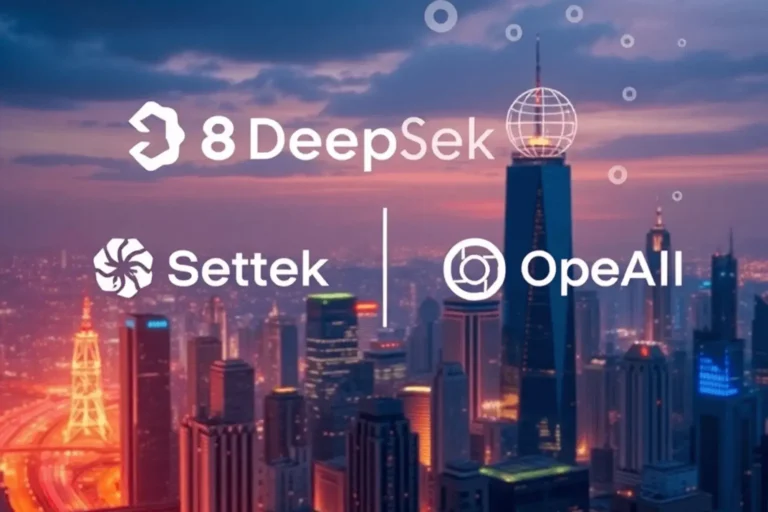When it comes to downloading videos from Facebook, many people have wondered if it’s actually legal to do so. Whether you’re looking to save a funny video from a friend, a tutorial, or a live broadcast, it’s important to know the legal boundaries. After all, the internet can be a bit like the Wild West, where rules can sometimes be hard to follow. So, let’s break down this question and see what experts have to say about download Facebook video.
The Basics of Facebook Video Downloads
Facebook, as one of the largest social media platforms worldwide, has become a hub for users to share and engage with all kinds of video content. From funny clips and news broadcasts to personal vlogs and professional tutorials, videos are an integral part of the Facebook experience. With the sheer volume of videos being shared daily, it’s easy to understand why so many people are tempted to download and save these videos for offline viewing. After all, watching videos without the need for an internet connection can be incredibly convenient. However, there’s a crucial point to remember: just because something is easily accessible on the internet doesn’t automatically mean it’s free for anyone to download.
When it comes to downloading Facebook videos, it’s important to understand the difference between convenience and legality. Facebook’s platform allows you to watch videos uploaded by others, but this doesn’t grant users automatic permission to download those videos for later use or redistribution. The video content that others post is still protected by copyright, which means it belongs to the person who created or uploaded it, unless stated otherwise. As a result, downloading a video without the creator’s permission can lead to legal issues.
The law surrounding the downloading of videos from Facebook is based on copyright regulations. Copyright laws protect original works of authorship, including videos. These laws give creators control over how their content is used, shared, and distributed. So, if you download a video from Facebook without permission, you could be infringing on the copyright holder’s rights. This is why it’s essential to understand that simply accessing a video on Facebook doesn’t grant you ownership or the right to download and redistribute it freely.
While Facebook does provide a feature that allows users to download their own videos, the situation is different when it comes to videos uploaded by others. Facebook’s terms of service prohibit downloading videos unless explicitly authorized. This means that even though videos may appear in your feed or be available for streaming, downloading them—especially for purposes such as sharing, re-uploading, or using them in your own projects—can violate Facebook’s terms and potentially copyright laws. As such, it’s crucial to always consider the legal implications before downloading any content, even if it seems like it’s readily available for viewing.
What Is Facebook’s Stance on Video Downloads?
- Facebook has a strict policy regarding the downloading of content from its platform.
- According to Facebook’s terms of service, users are not generally allowed to download videos unless an explicit download option is provided.
- Facebook permits users to download videos that they’ve uploaded, but downloading others’ content is not allowed unless the video is shared with a “Download” button enabled.
- If a video is shared publicly, it does not automatically give anyone permission to download or redistribute it.
- Public sharing of a video does not override copyright laws; the owner of the video retains the intellectual property rights.
- Copyright law still applies to publicly shared videos, meaning you need the owner’s consent to download or use the video in any way.
Legal Implications of Downloading Facebook Videos
| Implication | Description | Legal Concern | Possible Consequences | Exceptions |
| Copyright Infringement | Most videos on Facebook are protected by copyright, meaning the creator holds the rights to the content. | Downloading or redistributing a video without permission is illegal. | Legal action could be taken by the copyright holder. | If the video is in the public domain or licensed under Creative Commons, downloading may be allowed. |
| Fair Use Exception | The doctrine of fair use allows some video downloads for purposes like education, research, or commentary. | Fair use is a grey area, and the video’s intended use matters. | If your use doesn’t qualify for fair use, it could result in legal consequences. | Fair use is determined case by case, depending on the purpose and nature of the download. |
| Downloading Without Consent | Downloading videos from Facebook without the consent of the uploader is generally prohibited. | Violating Facebook’s terms of service and intellectual property laws. | Account suspension or potential legal action. | No exceptions unless the uploader explicitly allows the download. |
| Public Sharing of Videos | Even if a video is shared publicly, downloading it without permission is still illegal. | Copyright laws still apply to publicly shared content. | Copyright infringement charges could arise. | Public sharing does not grant permission to download or redistribute. |
| Educational and Research Use | Videos used for educational or research purposes may fall under the fair use clause. | You must prove that the video use is transformative and meets fair use guidelines. | Potential for legal challenges if fair use isn’t justified. | Educational and research purposes may qualify, but this is a narrow exception. |
Common Scenarios for Downloading Facebook Videos
When it comes to downloading Facebook videos, there are a few common scenarios that people find themselves in, and it’s important to understand how each one affects the legality of the action. One common scenario is downloading videos for personal use. You might think that if you’re simply saving a video to watch offline, there’s no harm in it. However, if the video is protected by copyright, the law still considers it illegal, even if you’re not distributing it or sharing it with anyone else. Personal use does not automatically grant you permission to download copyrighted content, and this could still be a violation of intellectual property rights.
Another common scenario is sharing downloaded videos. If you download a video and then decide to upload it on another platform, share it with friends, or use it in any public way, you are definitely entering into illegal territory unless you have the explicit permission of the video’s creator. This is one of the most clear-cut examples of copyright infringement. Even if you have good intentions, such as sharing a video for educational purposes, uploading or redistributing someone else’s content without permission violates copyright laws.
On the other hand, downloading your own videos is a situation where Facebook’s policy aligns with the law. If you’ve uploaded a video to Facebook, you are allowed to download it for personal use. This is the one scenario where downloading is entirely legal, as long as the content doesn’t infringe on the rights of others. Facebook even provides an option to download your own videos directly from their platform. However, keep in mind that if your video contains someone else’s copyrighted content (e.g., music, video clips), you may still be violating copyright laws even if it’s your own video.
How to Legally Use Facebook Videos
- Ask for Permission: If you want to download a video that isn’t your own, the most straightforward and legal way is to contact the person who uploaded it and ask for permission. If the uploader grants you permission, then you can download and use the video legally without any issues.
- Use Facebook’s Built-In Features: Facebook provides users with built-in tools that allow them to download their own videos. If you’ve uploaded a video to Facebook, you can easily download it directly from the Facebook mobile app or desktop site. This is the simplest and safest way to download videos legally, as it’s fully within the platform’s terms of service.
Downloading Facebook Videos with Third-Party Tools
| Aspect | Description | Legal Risk | Security Risk | Potential Consequences |
| Risks of Third-Party Tools | Many third-party websites and tools claim to allow you to download Facebook videos, but they come with risks. | Using these tools could violate Facebook’s terms of service. | These tools might not be secure and could expose your device to malware or other threats. | Your Facebook account could be suspended, and your device could be compromised by malware. |
| Potential Legal Consequences | Even though you may not face immediate legal issues, downloading videos using third-party tools could violate copyright laws. | Downloading copyrighted videos without permission is a violation of copyright laws. | While these tools may seem harmless, they can put you at risk of downloading copyrighted content without consent. | You could be held accountable for copyright infringement, leading to potential fines or legal action. |
Exceptions to the Rule
While the general rule is that downloading Facebook videos without permission is illegal, there are certain exceptions that can make it lawful. These exceptions primarily revolve around the type of license a video is uploaded under or its copyright status. Understanding these exceptions can help you navigate the complex world of online content downloads.
One exception is when a video is uploaded with a Creative Commons license. This type of license allows creators to give others permission to use their content, often for non-commercial purposes. If a video on Facebook has been uploaded with a Creative Commons license, you may be allowed to download and reuse the content under the specific terms set by the creator. This could include conditions such as giving proper credit or not using the video for commercial purposes. Always check the details of the license to ensure you’re complying with its terms before downloading and using the video.
Another exception involves videos that are in the public domain. Public domain content is no longer protected by copyright laws, either because the copyright has expired or because the creator has relinquished their rights to the content. Videos in the public domain can typically be downloaded and used freely, without the need for permission. However, it’s crucial to verify that a video is indeed in the public domain before downloading it, as there may be instances where content appears to be public domain but is still under copyright protection. Always double-check the copyright status to avoid potential legal issues.
In summary, while most videos on Facebook are protected by copyright, videos with a Creative Commons license or those in the public domain are exceptions. Being aware of these exceptions can help you download and use content legally, but it’s important to verify the license or copyright status before proceeding.
Why Do People Download Facebook Videos?
- Offline Viewing: One of the most common reasons for downloading Facebook videos is to watch them offline. Whether it’s a tutorial, a funny clip, or a live broadcast, sometimes you just want to save it for later when you don’t have access to the internet.
- Archiving: Some people like to save Facebook videos as part of an archive. Whether it’s for a personal collection or to reference later, archiving content can be a helpful way to keep track of important videos that they might want to revisit.
- Educational Use: Educational videos are another reason people might want to download Facebook videos. With educational content, you may want to access it without an internet connection or share it with students for learning purposes.
Alternatives to Downloading Facebook Videos
| Alternative | Description | Legal Consideration | Ease of Use | Limitations |
| Save for Later Using Facebook’s Features | Instead of downloading videos, Facebook offers a “Save” button to store videos in your saved collection. | This method is fully legal, as it’s provided by Facebook itself. | Very easy to use and accessible from both the mobile app and desktop. | You can only save videos for future viewing within the platform. |
| Screen Recording | Screen recording allows you to capture videos playing on your screen. This is an alternative to direct downloads. | This method could infringe on copyright laws if the video is copyrighted and used without permission. | Simple to do on most devices, but requires some technical knowledge. | The quality may not be as high as the original video, and it still risks copyright issues. |
What Experts Say About Downloading Facebook Videos
Experts agree that while the convenience of downloading Facebook videos can be tempting, it’s important to respect intellectual property laws and Facebook’s terms of service. Digital rights advocates emphasize that the safest option is to refrain from downloading videos unless you have explicit permission from the content creator. If you are interested in a video, it’s better to share it, comment on it, or engage with it through the platform’s features rather than saving it illegally. This approach supports content creators and helps protect you from legal issues.
Respecting content creators is another central point raised by experts. Content creators put in time and effort to produce videos, and their work deserves recognition and respect. If you truly appreciate a video, experts recommend showing that appreciation by sharing the video, liking it, or commenting on it. Downloading someone else’s video without permission not only undermines their work but also violates copyright laws. Engaging with videos within the platform is the best way to support creators while staying within legal boundaries.
Additionally, staying informed about copyright laws is crucial. Laws surrounding digital content can change rapidly, and what may have been acceptable a few years ago might no longer be permissible today. Experts suggest regularly reviewing updates to copyright legislation to ensure you’re aware of the most current regulations. As new platforms and technologies continue to emerge, the legal landscape surrounding content downloads will evolve, and keeping up with these changes is key to avoiding potential legal pitfalls.
In conclusion, while downloading Facebook videos might seem like a harmless action, experts warn that doing so without permission can lead to legal consequences. By respecting the rights of content creators, sharing videos through the platform, and staying updated on copyright laws, you can enjoy digital content responsibly and legally. It’s always better to err on the side of caution and avoid downloading unless it’s your own content or you’ve been granted explicit permission.









